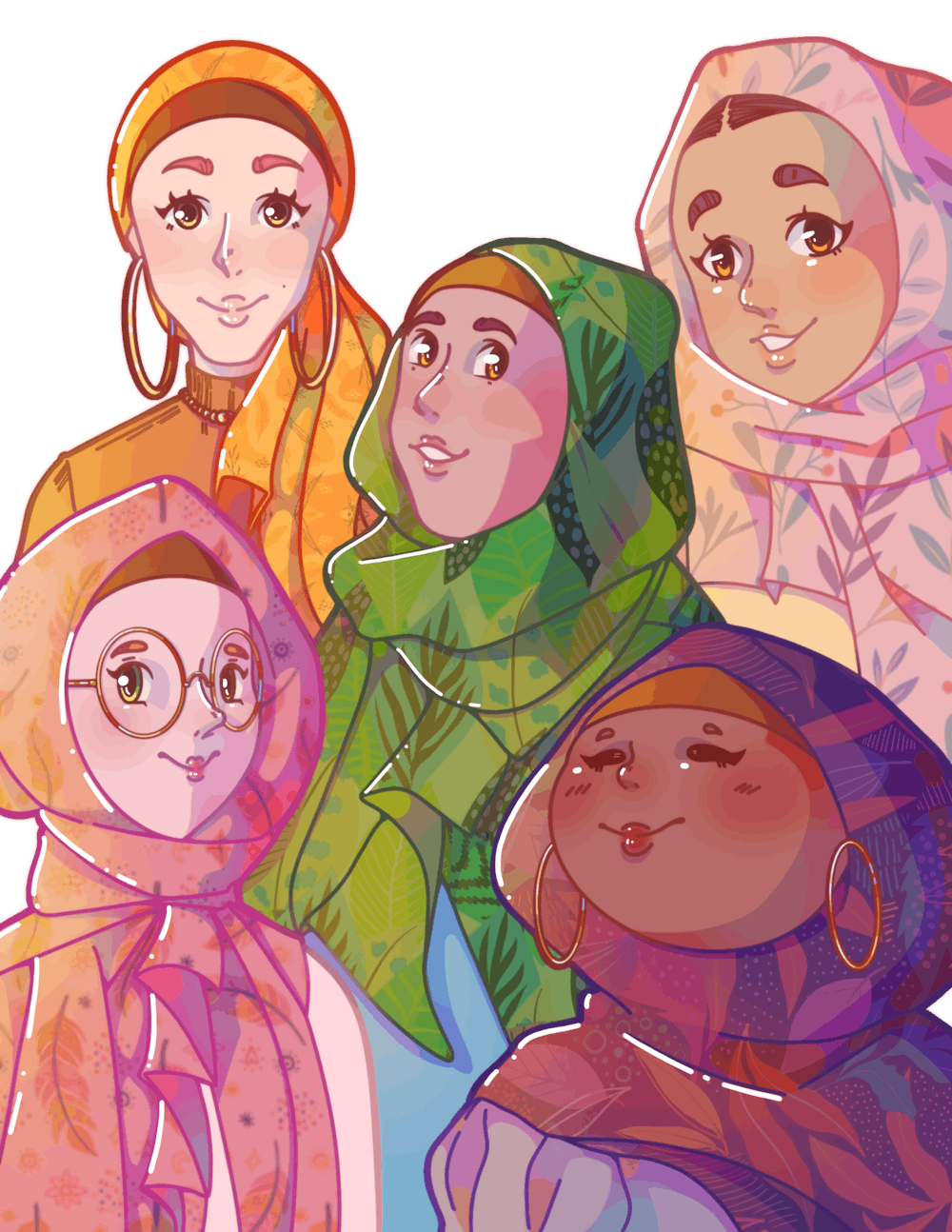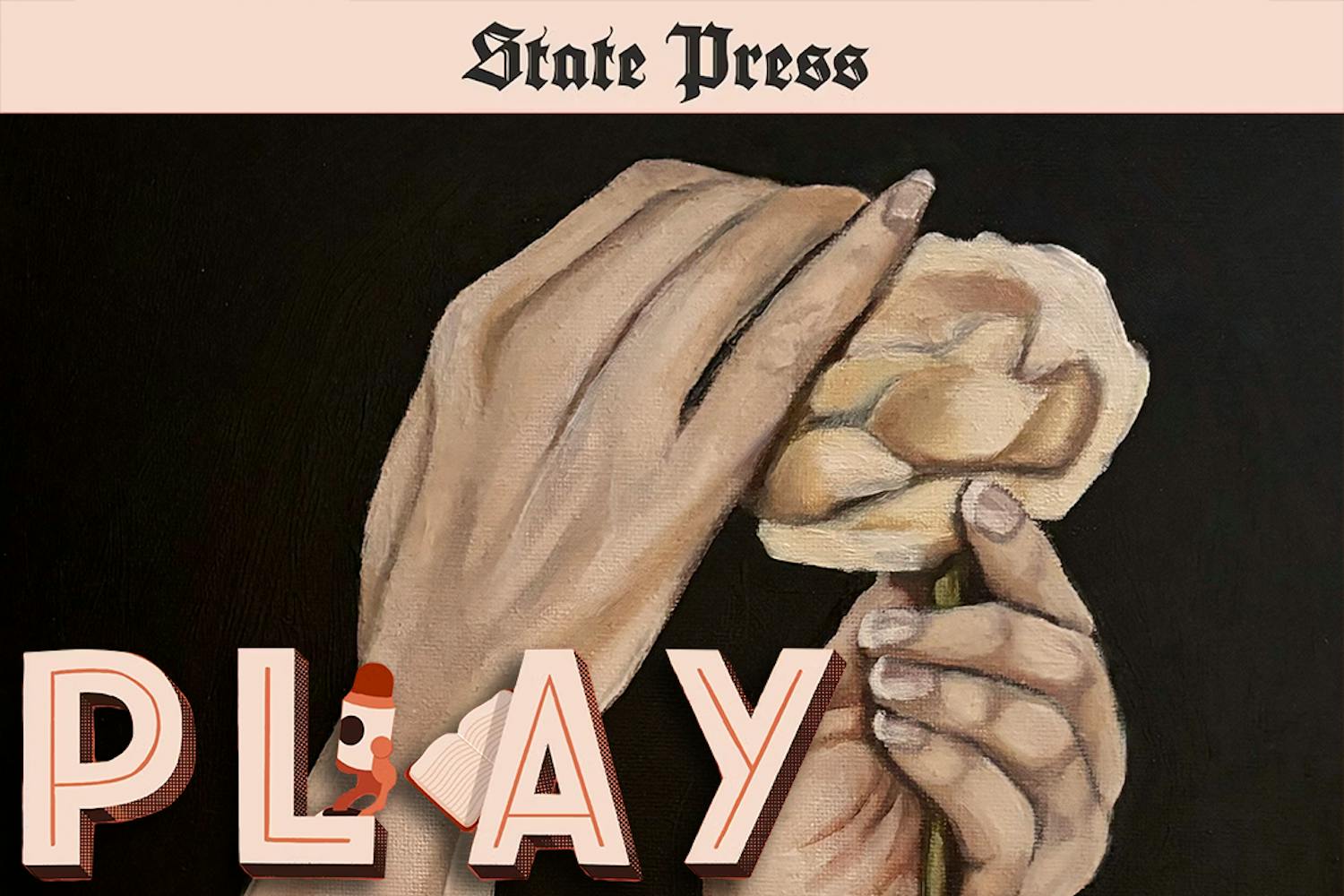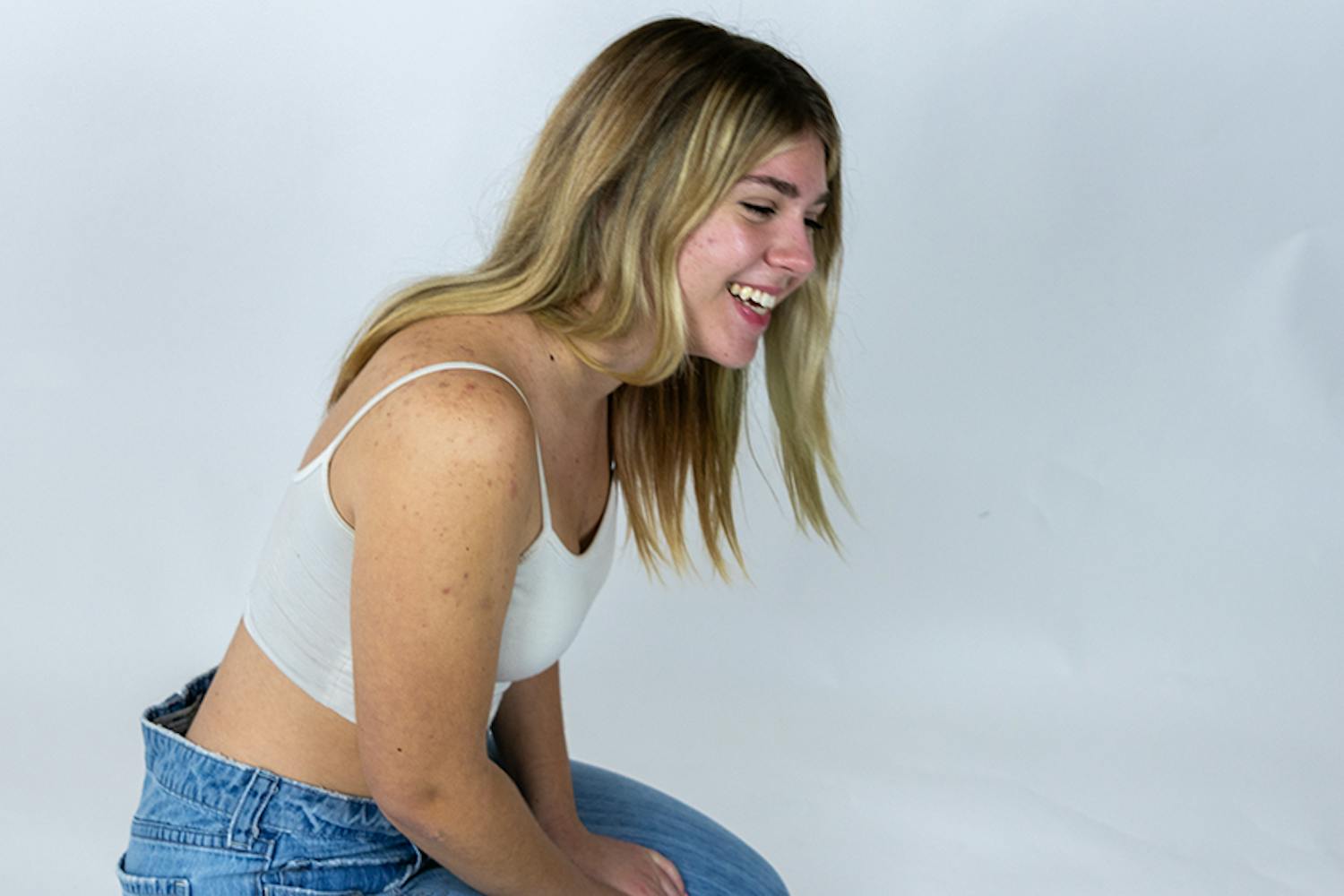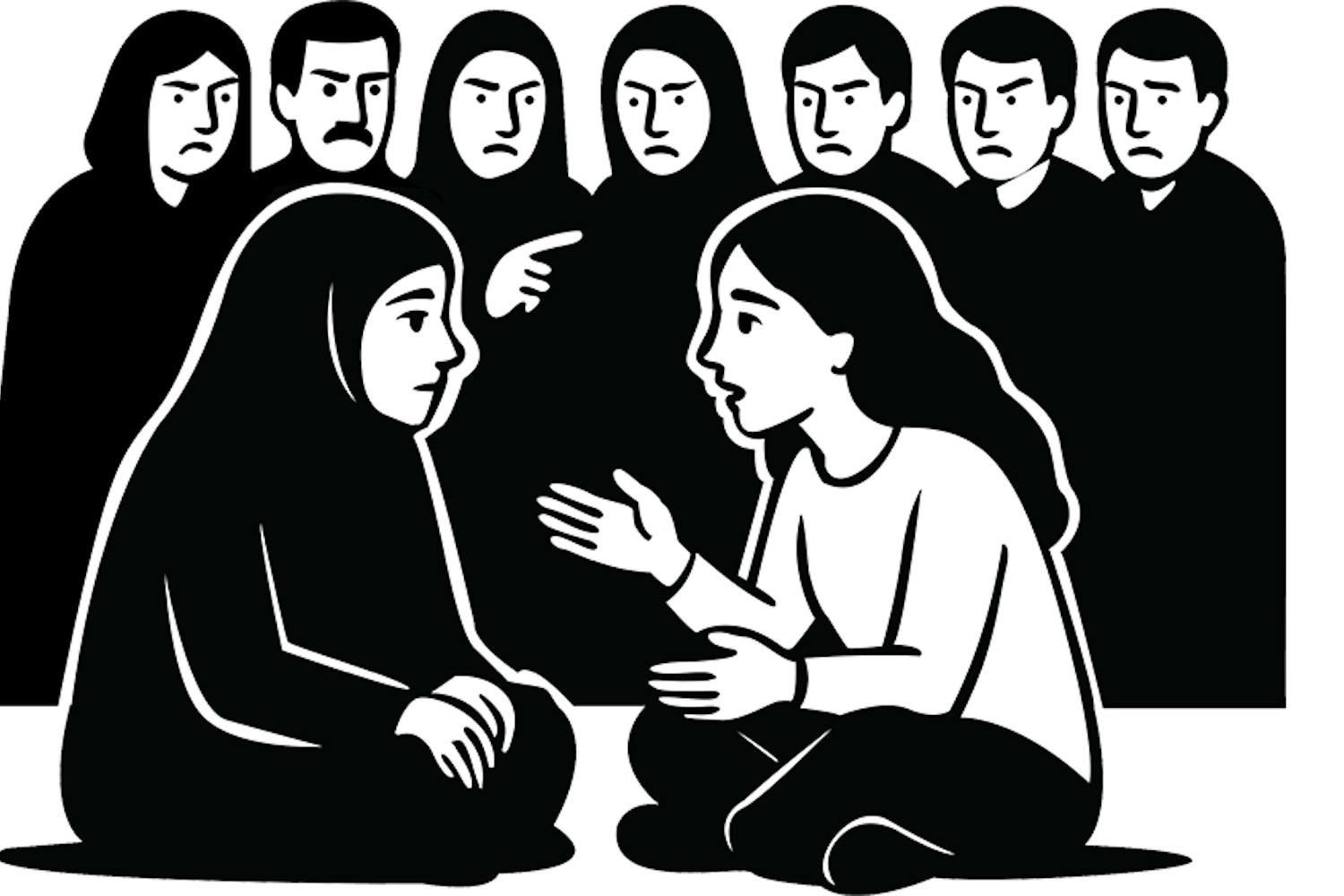“Hijab, in Islam, means to, you know, cover yourself and stay modest,” said Aisha Sadaat, a freshman medical studies student. “But further than that, the hijab is a kind of relationship and constant connection to Islam. It’s a constant reminder of what I follow and what I value.”
Hijab means something different for every Muslim. Across the Muslim diaspora, the hijab symbolizes different things, ranging from traditionalist practices to more modern views. Each Muslim woman has her own relationship with the hijab, but it remains a symbol of her religious identity.
“It’s a form of identity, comfort, and security,” said Safa Elhassan, a freshman studying journalism and mass communication, describing the hijab as “a walking representation of what Islam is.”
Tagwa Salih, a junior studying global health, often meets people who are curious about the hijab and Islam. She said wearing the hijab gives her an opportunity to discuss Islam in a positive and uplifting way. She gets questions about why she wears it and what it means and represents, which can be great conversation starters, she said.
Since Salih was young, the hijab has been a “constant theme” in her life. She grew up around hijabi women, and as she got older, she learned more about the importance of the hijab within her religion. She said now her life feels unnatural without it.
“I couldn’t wait until it was, like, my turn,” Salih said. “And then, when I wore it, I just haven’t looked back. It’s just been like a constant in my life. This is who I am to the world, and I definitely identify with it.”
Salih was taught that the hijab is like a crown — one “that has been ordained to me by Allah Subhanahu Wa Ta’ala.” It is a gift from God to be able to represent Islam publicly, she said.
Aamina Ahmed, a 2022 ASU graduate with a degree in medical microbiology, said the hijab is a way of “carrying yourself” by being modest — not only in how you dress but in your behavior as well.
“Hijab is a protection of your entire being and your character,” Ahmed said. Hijab protects you by being cautious of how you talk and act so as not to harm yourself or others, she said.
Aala Suliman, a freshman studying psychology, finds confidence in her hijab. Like Salih, the hijab is a core part of her identity. Everyone is on their own journey and has their own relationship with hijab, she said.
Politicization of the hijab
Since 9/11, the American perception of Islam has changed drastically, heavily influenced by news and entertainment media. The fear-mongering of the War on Terrorism increased Islamophobia in the 2000s and led to widespread harmful stereotypes of Muslims, especially Muslim women.
In addition to the Western mass media affecting views of Muslim women, laws in Islamic states like Iran and Western countries like France have also influenced global perspectives on hijab.
This has led to the hijab becoming politicized globally; debates and discussions filled with misconceptions about hijab often leave out the voices of the Muslim women wearing it.
“To see people politicize the hijab is upsetting because it’s not a political statement,” Salih said. “It’s an act of worship, a means of religious expression. So to politicize it is skewing the image of Islam and the hijab in general.”
The spread of Islamophobia comes from a place of ignorance and misinformation, Salih said, and it can spur many forms of violence against Muslims. But she still wears the hijab regardless of what others say or think about it.
Suliman said being Muslim has been racialized because of the spread of misinformation about the religion. Even though Suliman is Black, when she is mostly surrounded by other Black people, people still see her through the lens of negative stereotypes associated with Islam, she said.
“It’s like people judge you before we even speak,” she said.
Suliman also has to prove herself for people to see her for who she really is. Even if people are not outwardly Islamophobic, the prejudice feels internalized.
The politicization of hijab goes hand in hand with the American value of freedom of choice, Elhassan said. “The problem isn’t the idea of the hijab or the laws being put in place. Rather, it’s how the government is taking action to reprimand us,” she added.
The hijab is supposed to be a personal relationship with and connection to Islam, Sadaat said. In her opinion, that right is taken away from many Muslim women when Islam is depicted negatively.
The mass media’s portrayal of the hijab also affected Ahmed. She noticed there had been a shift in how hijab was portrayed by the media; it has become more of a fashion statement, seeing the hijab on fashion runways and in magazines.
This is cool, she said, but it also gives off the impression that there are beauty standards that must be followed.
“The whole point is that we are at the same level, where beauty isn’t valued,” said Ahmed. “But it makes us feel self-conscious because we only see models with smooth skin and skinny physiques portrayed.”
The media should not oppress women by taking away their right of choice, but it also shouldn’t be trivialized as a mainstream fashion statement, she said.
Finding sisterhood through hijab
The Muslim community encourages wearing the hijab, but sometimes for the wrong reasons, said Suliman. Oftentimes, Muslim women wear hijab because they feel pressured by their families and by the culture of Islam in general. This causes social repercussions that can lead to a girl taking off her hijab, she said.
Sometimes, wearing the hijab is encouraged “so that men can respect you, that nobody touches you and stuff like that,” Suliman said. “Which is very discouraging to hear because hijabis still get harassed.”
With a safe space where Muslim women’s voices are heard, the Muslim community can encourage hijab in a more positive light, especially because the community motivates women to wear the hijab, Sadaat said.
Sadaat attended an Islamic school before coming to ASU. She started wearing hijab when she was 11 after seeing the “pretty older girls” wearing it and wanting to be like them.
But as she got older, the dress code at her school became more strict. Sadaat said her school focused too much on the custom of wearing the hijab rather than the meaning behind it and its importance within Islam. “If you look at it, surface level, it can distance some people from Islam and God,” she added.
Although some factors within the Muslim community discourage the hijab, the community can also be a “safety corner” for navigating Western countries like the U.S., Elhassan said.
The Muslim community is one Elhassan can belong to. Even though she attended a predominantly white, secular school most of her life, Elhassan has Muslim friends from various schools, areas, and backgrounds. The sense of comfort that comes from her religious relationships strengthens her connection to the hijab and Islam as a whole.
In contrast, Ahmed was not surrounded by fellow hijabis because of the demographics of the area she grew up in. Like Elhassan, she went to a school where there were few Muslims. Because of this, Ahmed said she felt a distinct division between her life at school and her personal life at a young age.
When Ahmed started attending ASU and realized how large the University’s Muslim student population is, the newfound community strengthened the confidence that she had in her relationship with hijab.
“Having Muslim people around you who look like you and share the same experiences is a very supportive thing when wearing hijab,” she said.
In conversations with other Muslims, Salih found people who related to being part of an underrepresented community in the U.S. This helped her relationship with the hijab “flourish” because it showed her that she was not alone.
"Being part of the Muslim community reminds me that I’m part of a sisterhood of women who wear a hijab and also women who don’t physically wear the hijab. But the idea of the hijab resonates with them in some way.”
Edited by Sam Ellefson, Camila Pedrosa, Alexis Moulton and Greta Forslund.
This story is part of The Spectrum Issue, which was released on April 5, 2022. See the entire publication here.
Reach the reporter at fgabir@asu.edu and follow @FatimaGabir on Twitter.
Like State Press Magazine on Facebook, follow @statepressmag on Twitter and Instagram and read our releases on Issuu.
Fatima is a junior studying journalism and mass communication with a minor in justice studies. This is her fourth semester with The State Press. She has also worked at Phoenix Magazine.





